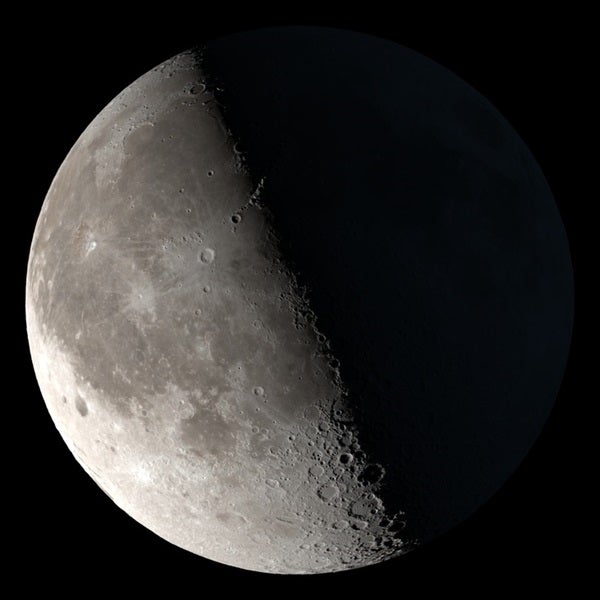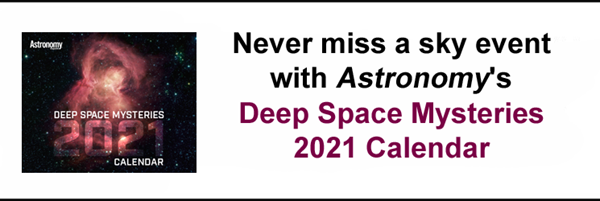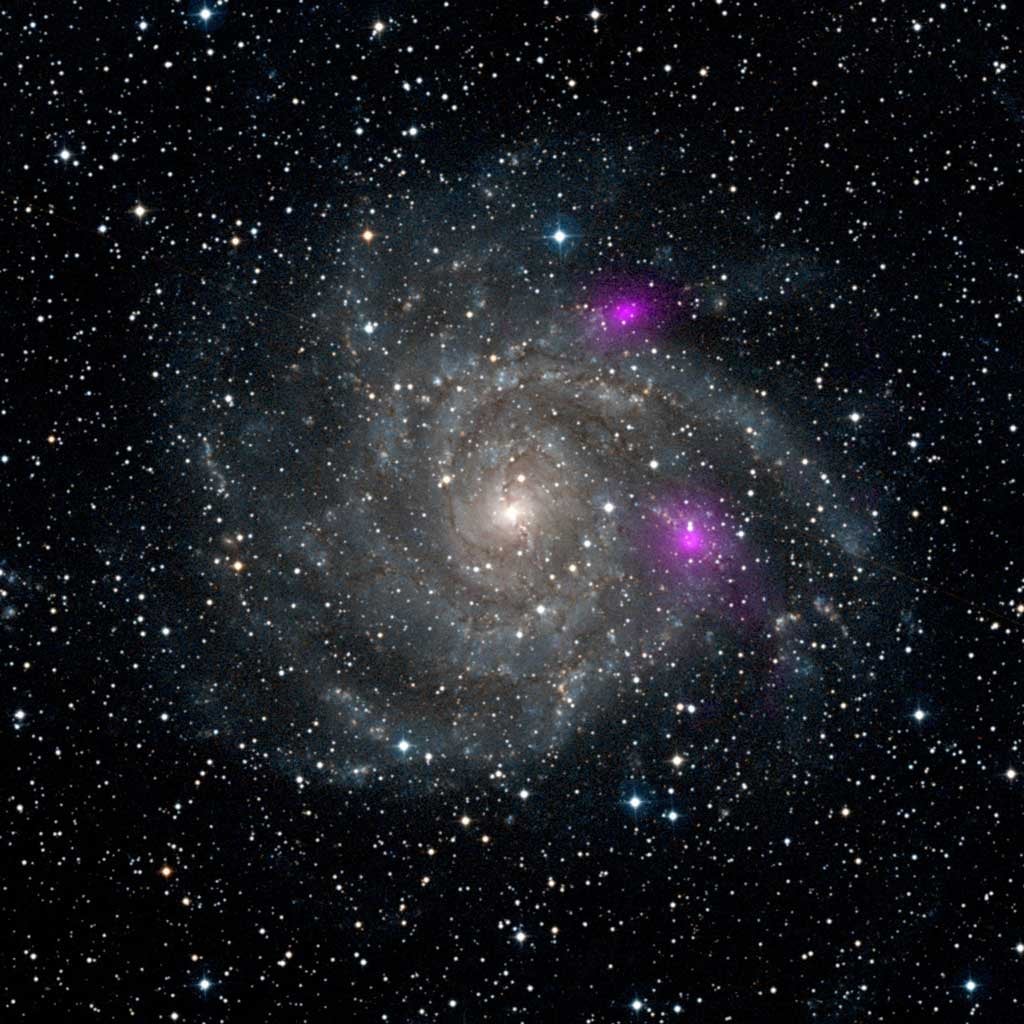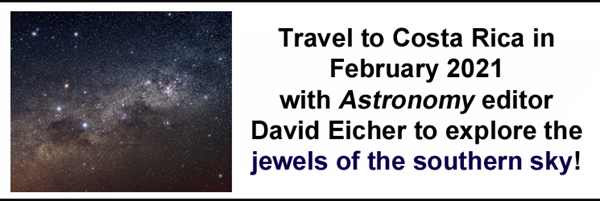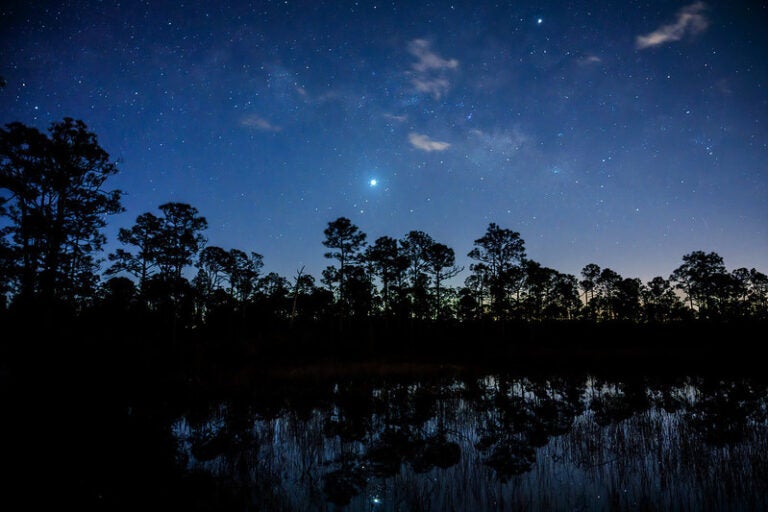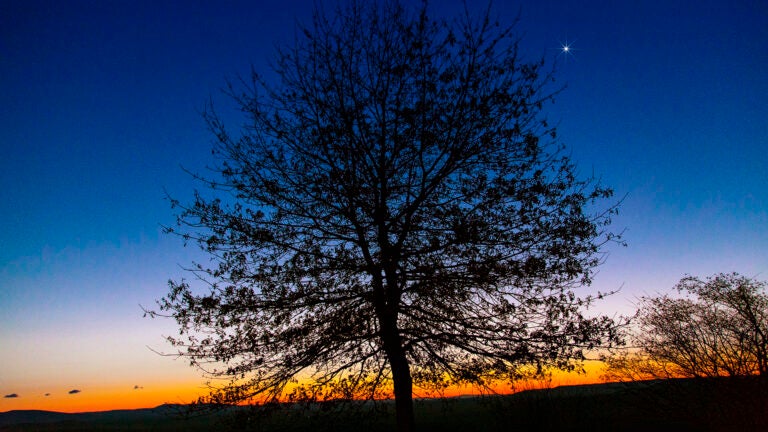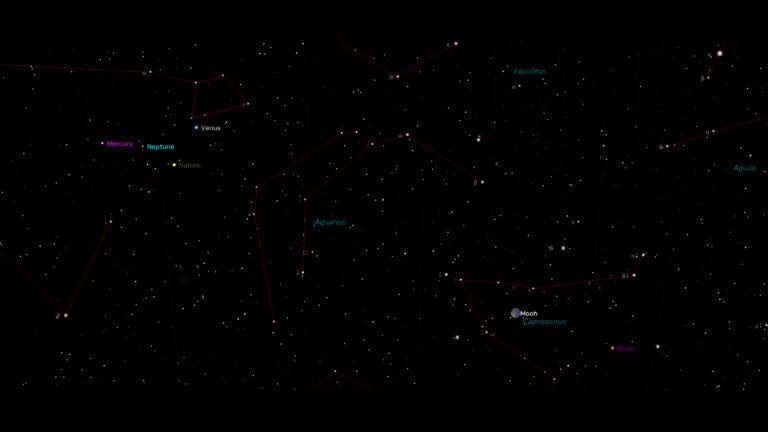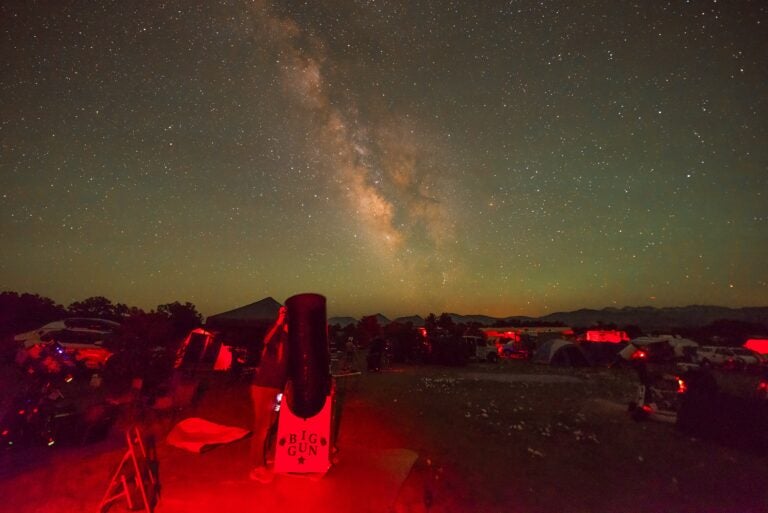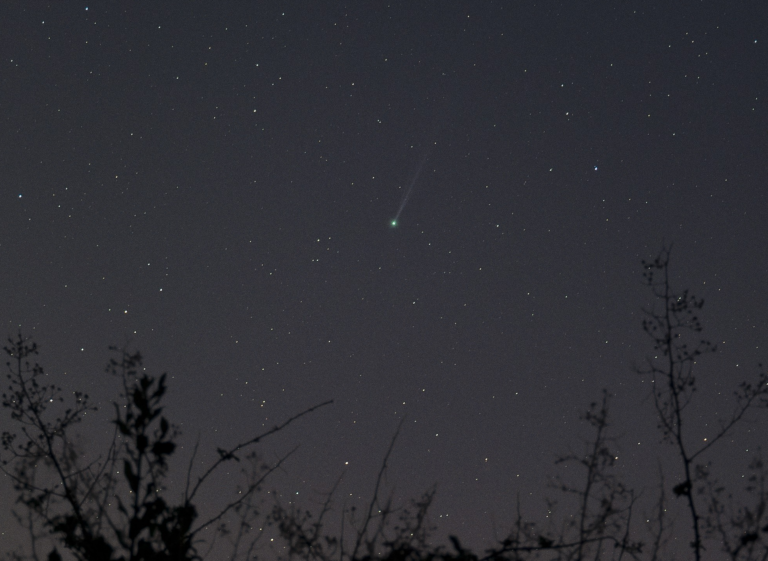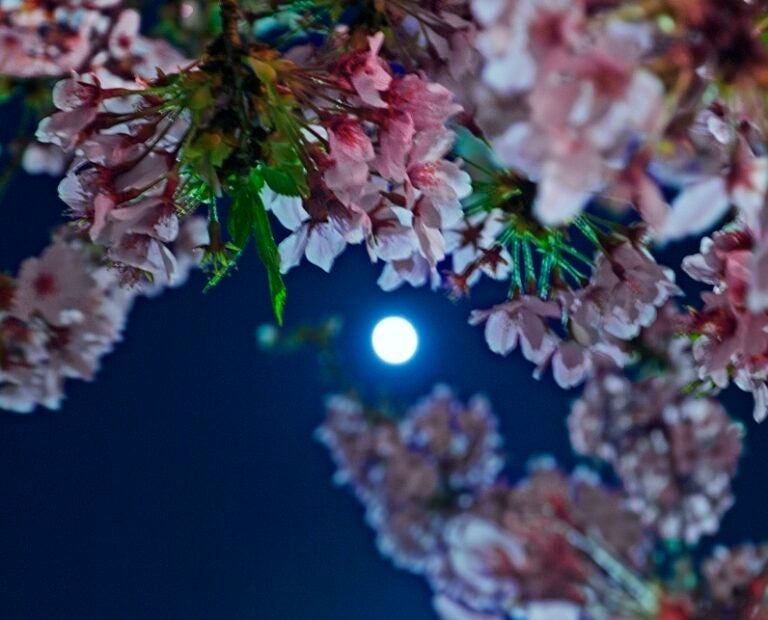Mars rules the evening skies, floating high in Pisces after sunset. The Red Planet is a bright magnitude –1 tonight and shows an obvious reddish tinge, even without optical aid. Its 14″-wide disk will continue to shrink throughout the month, so catching it in early December is definitely preferred. If you want to see its features, you’ll need a relatively large aperture and perhaps even video capture technology for the best shot at surface detail.
Although the scattered stars of Pisces are dim, 29° east of Mars is magnitude 2.5 Menkar, Cetus’ alpha star and the constellation’s second brightest. This cool red giant is roughly 80 times the size of the Sun and would stretch all the way out to Mercury if plunked in the middle of our solar system. Menkar’s cool surface temperature gives it a red-orange hue — compare it with Mars to see which has the more obviously red color. Of course, Menkar’s color comes from the light it produces through fusion, while Mars appears red because of sunlight reflecting off its rusty, oxidized surface.
Sunrise*: 7:06 A.M.
Sunset: 4:34 P.M.
Moonrise: 8:26 P.M.
Moonset: 10:48 A.M.
Moon Phase: Waning gibbous (82%)
*Times for sunrise, sunset, moonrise, and moonset are given in local time from 40° N 90° W. The Moon’s illumination is given at 12 P.M. local time from the same location.
Jupiter’s moons line up like ducks in a row tonight, offering a unique view after sunset. As soon as darkness begins to fall, find our solar system’s largest planet in the southwest, where it sits above the setting Teapot of Sagittarius. To its northeast is Saturn, which glows a much dimmer magnitude –0.4 to Jupiter’s magnitude –2.1.
Zoom in on Jupiter to see its moons in a neat line to the planet’s northeast. In order from closest to farthest are Europa, Io, Callisto, and Ganymede. In reality, Io orbits closet to the planet and Callisto orbits farthest away; their order tonight appears swapped thanks to projection effects.
The moons will maintain their lineup as Jupiter sinks below the horizon; they’ll slide into a similar pattern again on the 19th, when Jupiter and Saturn have nearly reached their upcoming Great Conjunction.
Sunrise: 7:07 A.M.
Sunset: 4:34 P.M.
Moonrise: 9:32 P.M.
Moonset: 11:29 A.M.
Moon Phase: Waning gibbous (74%)
Sunday, December 6
Venus shines a bright magnitude –4 in the early morning sky. You can find it in the constellation Libra. The planet rises around 5 A.M. local time and is already 12° high an hour before sunrise this morning. 3.5° west of the planet is Zubenelgenubi, the constellation’s brightest star — and also a naked-eye double, much like more famous Mizar and Alcor in the Big Dipper. The brighter star’s 5th-magnitude companion is just 4′ away (closer than Mizar and Alcor, which are nearly 12′ apart).
Venus is currently 90 percent lit and sits 1.46 AU from Earth, where 1 AU is the average Earth-Sun distance. Early December is the best time to view the planet, as its elongation from the Sun will shrink as the weeks go by. At the end of the month, Venus will rise around 6 A.M. local time — just 90 minutes before the Sun.
We’ll check back in with the planet next week, when the Moon will close in for a picturesque scene.
Sunrise: 7:08 A.M.
Sunset: 4:34 P.M.
Moonrise: 10:40 P.M.
Moonset: 12:04 P.M.
Moon Phase: Waning gibbous (64%)
Monday, December 7
Asteroid 16 Psyche reaches opposition at 3 P.M. EST today. This strange, potato-shaped body isn’t like most asteroids, which are composed of rock. Instead, Psyche is largely metallic, and may even be the stripped core of a tiny planet that never was. Its unique composition has made it the target of the upcoming Psyche mission, set to launch in 2022.
To see Psyche’s magnitude 9.5 glow, wait until an hour or two after dark. It’s located near one horn of Taurus the Bull, rising in the east as the Sun sets. Use the bright, unmistakably orange-hued Aldebaran as a guidepost; you’ll find Psyche just over 6° east of the star. The region will rise higher as the hours tick by, so take your time — although you’ll want to get your observing in before the Moon rises just before midnight. Binoculars or a small scope should be all the boost you need to spot it.
The Moon also passes 0.5° north of asteroid Vesta at 5 P.M. EST. They’ll both be visible early tomorrow morning in Leo the Lion.
Last Quarter Moon occurs at 7:37 P.M. EST this evening.
Sunrise: 7:09 A.M.
Sunset: 4:34 P.M.
Moonrise: 11:50 P.M.
Moonset: 12:36 P.M.
After their close pass yesterday afternoon, the Moon and asteroid 4 Vesta are already 5° apart early this morning. The pair rises in Leo around local midnight and straddles the invisible line connecting Iota (ι) and Sigma (σ) Leonis, creating the Lion’s back leg. Vesta, between magnitude 7 and 8, should be visible with binoculars or a small scope, but might be a bit tricky to find with the Moon so close.
Alternatively, you can simply come back to the Lion’s hindquarters in a day or two, when the Moon will have moved on and Vesta is easier to spot.
Also on your must-see list should be the Leo Triplet, comprising M65, M66, and NGC 3628. These three interacting spiral galaxies lie midway between Chertan (Theta [θ] Leonis) and Iota, and all fall within a 1° field of view. Again, if you’re having trouble seeing these galaxies’ fuzzy glow, simply return to the region for a bit later in the week, when the Moon’s light won’t interfere.
Sunrise: 7:10 A.M.
Sunset: 4:34 P.M.
Moonrise: —
Moonset: 1:05 P.M.
Moon Phase: Waning crescent (42%)
The circumpolar constellation Camelopardalis isn’t a camel, but a giraffe. It also contains some great binocular objects worth spending some time on this evening.
The open star cluster Collinder 464 is about 8.5° north of magnitude 4 Alpha (α) Camelopardalis. This young grouping of stars has roughly a dozen members spread across a region between 1° and 2° in size. At its center is a 5th-magnitude star, SAO 5455.
Less than 3.5° from Gamma (γ) Camelopardalis is the spiral galaxy IC 342. Despite its nickname — the Hidden Galaxy — it’s relatively easy to spot in binoculars. The name is derived from its location near the Milky Way’s galactic equator, whose dust obscures much of the galaxy’s light. Astronomers estimate that if it were located in a less dusty region of the sky, IC 342 would be visible to the naked eye.
Sunrise: 7:11 A.M.
Sunset: 4:34 P.M.
Moonrise: 1:00 A.M.
Moonset: 1:34 P.M.
Moon Phase: Waning crescent (31%)
Thursday, December 10
The ice giant Neptune reached is stationary point in Aquarius late last month and is now just beginning to move eastward against the background stars. It’s less than 1° northeast of 4th-magnitude Phi (φ) Aquarii and within reach of binoculars or a small scope. Glowing at magnitude 7.9, Neptune appears just 2″ across. It will likely appear as a “flat,” gray-blue star.
Aquarius itself isn’t a stunning constellation, but there’s a more famous one nearby: look north to spot Pegasus the Winged Horse, whose Great Square asterism is drawn from the stars Algenib, Markab, Alpheratz, and Scheat. These four stars are nearly equal in brightness, making them relatively easy to pick out. And about halfway between Markab and Scheat is magnitude 5.5 51 Pegasi, famous for its planet, 51 Pegasi b (also called Dimidium), which is the first exoplanet ever spotted around a Sun-like star.
Sunrise: 7:12 A.M.
Sunset: 4:35 P.M.
Moonrise: 2:11 A.M.
Moonset: 2:02 P.M.
Moon Phase: Waning crescent (21%)
Friday, December 11
Although the Geminid meteor shower won’t peak for a few more days, it’s been ramping up since the 4th and you may notice an increase in the number of meteors you see each night. The shower’s radiant is near the bright star Castor in Gemini the Twins, but your best bet is to look 30° to 60° away from the radiant to see the longest meteor trails.
To the southwest, that puts you within the realm of Orion the Hunter, perpetually aiming his bow at Taurus the Bull. Orion’s easy-to-spot belt is made up of the stars Alnitak, Alnilam, and Mintaka, while his right shoulder and left knee are the famous stars Betelgeuse and Rigel, respectively. Right below Alnitak is Orion’s sword, a naked-eye fuzz that’s one of the closest star-forming regions to Earth. Within it is the famous Orion Nebula (M42), a beautiful, sprawling cloud of gas and dust whose details are visible even under low magnification.
Sunrise: 7:12 A.M.
Sunset: 4:35 P.M.
Moonrise: 3:25 A.M.
Moonset: 2:33 P.M.
Moon Phase: Waning crescent (12%)

